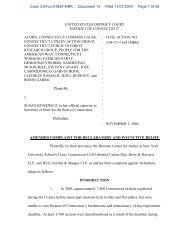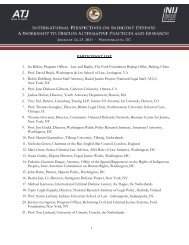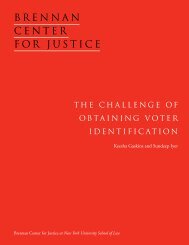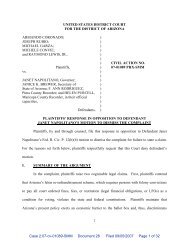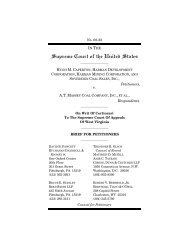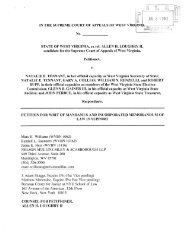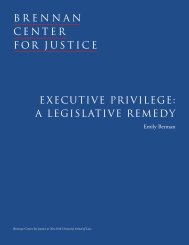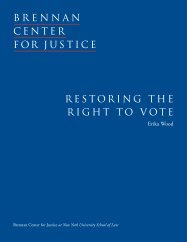THE NEW YORK STATE LEGISLATIVE PROCESS: AN ...
THE NEW YORK STATE LEGISLATIVE PROCESS: AN ...
THE NEW YORK STATE LEGISLATIVE PROCESS: AN ...
Create successful ePaper yourself
Turn your PDF publications into a flip-book with our unique Google optimized e-Paper software.
legislation. As a result, the final product – the bill reported to the floor and passed<br />
into law – suffers from being inadequately fertilized, revised, and incubated into<br />
a mature and well-crafted approach to a specified problem. In addition, the<br />
absence of hearings prevents the development of an important part of the legislative<br />
history that courts use to interpret laws and to enforce the Legislature’s<br />
will faithfully.<br />
■■ COMMITTEE MEETINGS<br />
It is commonly understood in Albany that meetings of standing committees<br />
rarely involve any significant consideration, discussion, or debate concerning a<br />
piece of legislation. Although the available data are limited, what is available confirms<br />
this perception.<br />
For each of the 308 major laws analyzed, we sought minutes and other records<br />
for all meetings of the committees to which each bill was referred for the legislative<br />
session in question. 44 Significantly, the Rules of the Senate require that<br />
minutes shall be taken of all open meetings of committees, including a record<br />
of all motions, proposals, resolutions, and any other matters voted upon. 45 As<br />
a general rule, however, chairpersons of Senate committees do not have<br />
minutes recorded for their meetings except to the extent that members’ votes are<br />
recorded for each bill. 46 This failure to comply with the Senate’s limited requirements<br />
for transparency not only impedes research but also limits public access<br />
to the legislative process and reduces public accountability of the State’s elected<br />
representatives. The Assembly’s committees follow the same unfortunate<br />
practices, albeit without being in violation of any of that chamber’s own rules. 47<br />
Still, from the records of committee votes on legislation and other materials that<br />
are available, certain facts are clear.<br />
First, the standing committees in the Assembly and the Senate usually address<br />
each bill at only one committee meeting, if at all, to cast a vote on it. 48 According<br />
to one Senator, moreover, “[c]ommittees handle the average bill in a matter of<br />
seconds. While there is occasionally longer discussion of legislation, this is the<br />
exception rather than the rule.” 49<br />
Second, the infrequency of committee meetings reflects the limited scope of<br />
committee work. In both the Assembly and the Senate, committee meetings are<br />
ostensibly scheduled either weekly or biweekly throughout the session. 50 Because<br />
minutes are not regularly kept and no reliable record of the use of proxy votes in<br />
the Senate exists, however, it is not possible to determine accurately the number<br />
or the regularity of committee meetings in either chamber. Many committees<br />
meet only a few times each year. For example, in 2003, the Senate Aging<br />
Committee met only three times; the Senate Banks Committee met five times; the<br />
Senate Cities Committee met five times; and the Senate Housing, Construction,<br />
and Community Development Committee met only once for the entire year. 51<br />
Tales of committees that have never met but nevertheless voted to pass bills are<br />
<strong>NEW</strong> <strong>YORK</strong> <strong>STATE</strong>’S <strong>LEGISLATIVE</strong> <strong>PROCESS</strong> 9



